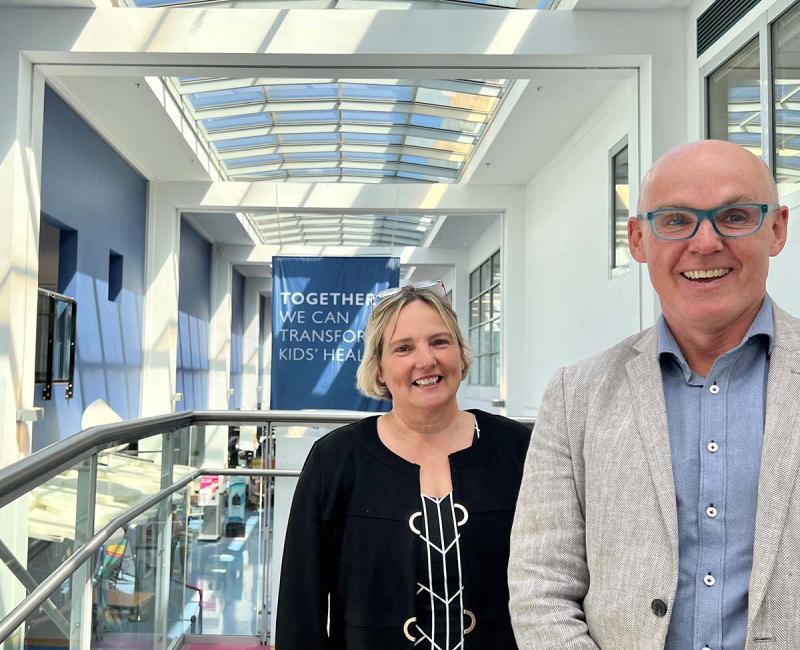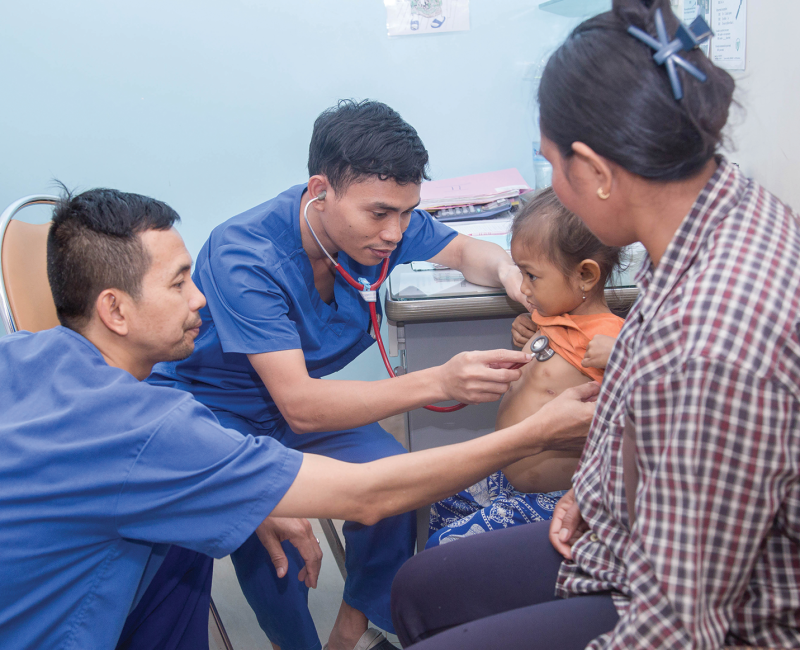Dermatologist Dr Li-Chuen Wong has treated countless skin conditions in kids.
By her own account, there’s not much she hasn’t seen. “You don’t get those insights unless you’ve actually treated hundreds and hundreds of patients,” says Dr Wong.
But the young patients at her Sydney clinic aren’t the only ones benefiting from her experience.
Dr Wong is one of more than 100 of Australia’s top paediatric specialists taking part in the Sydney Child Health Program (SCHP), run by the Children’s Hospital of Westmead and Sydney Children’s Hospital Network.
“Our program is designed to help doctors identify the red flags that need to be actioned early, so that we don’t delay treatment and we also minimise complications from unnecessary treatments,” says SCHP’s director, Dr Annemarie Christie.

This online training program has now attracted thousands of participants from more than 49 countries. But despite its success, the SCHP team saw a gap that they were keen to fill.
“We didn’t have any reach in China,” Dr Christie says. “And we knew there was a need, particularly in regional areas, for access to education in paediatrics.”
“It actually helps to minimise the number of children that may need to be referred to bigger city centres because the local doctors are more equipped to manage them, and it also can reduce the unnecessary delays to treatments.”
She says it’s often in more remote or rural areas where doctors lack the resources to update their training and keep up to speed with the latest developments in medicine.
But now, thanks to a grant from the National Foundation for Australia-China Relations, these doctors will also be able to access the program.
Dr Christie says the Foundation has not only provided funding for their expansion into regional China, but also helped them build relationships with the local hospitals and health clinics.
“We’ve been overwhelmed by the response [to SCHP in China],” Dr Christie says.
More than 120 doctors in China applied for the first round.
“We got nearly three times the amount of participants than we could handle,” Dr Christie says. “So we’ve got lots of engagement there on the ground, which is excellent, and people we can go back to.”
Leading the way on impact
The 12-month training program consists of interactive webinars and tutorials, covering a wide range of subspecialties.
Dr Wong is in her 18th year of presenting the segment on skin infections.
“This course, more than any other course, is so practical,” she says. “These are experts who are giving you their pearls or tips on how to treat kids.”
And there are endless examples of that advice being put into action.
Dr Wong once talked about how to treat scabies, a highly contagious skin rash. A doctor in the South Pacific island nation of Vanuatu followed her suggestion to treat not only the infected child but others at the same time to avoid reinfection.
“That decision was life-changing for that particular community,” she says. “For once, it cleared the community rather than just an individual patient.”
In the SCHP’s evaluation last year, participants documented more than 3,000 cases of how the program had aided their own day-to-day practices. These ranged from avoiding the overuse of antibiotics, to identifying symptoms of the potentially life-threatening disease meningitis, and treating it before it progresses.


Catering to a global community
Dr Wong says that as newer and better treatments become available, it’s important to share that information with doctors around the world.
She gives the example of eczema, an inflammatory skin disease which affects up to 20% of children globally.
In the past, this condition was typically treated with moisturising or topical steroids.
“But very recently,” says Dr Wong, “there’ve been advances where we now treat with targeted biological medication which are injections given every second week, or tablets that aren’t immunosuppressive medications so they only target the skin.”
“So now we have tools to significantly change the lives of kids with very, very severe eczema.”
But she’s also conscious that not all communities have the same tools at their disposal.
While the standard way to treat warts in kids in Australia is by applying a painless compounded medication, Dr Wong says this treatment can be expensive to get in regional China.
So in her SCHP lectures, she also talks about alternatives, such as pricking the wart with a needle under topical anaesthetic.
She says the program is very open to feedback from participants and the presenters constantly revise their content to ensure it factors in local circumstances.
“It’s very much a two-way relationship,” she says.
“When the program was still Australia-centric, we would talk about medications that we knew were very readily available. But now all the presenters tailor their content so that there’s an international flavour.”
The course is currently offered in English, but SCHP has plans to add subtitles in other languages down the track.
Looking back, and forward
Dr Wong herself took part in the program as a junior doctor, and says she’s proud to see how far it’s come.
“I've actually seen it grow from being a very small, very tiny part of the hospital,” she says.
“But even though it’s grown exponentially, like beyond our wildest dreams to go to China, it still is very personal. You will get a doctor who tells you personal stories and it’s still very grassroots.”
According to last year’s evaluation report, more than 99% of past participants recommend this program to others.
SCHP’s Dr Annemarie Christie hopes that the program can continue to expand.
“We know how important timely, evidence-based education is,” she says. “It can help to improve patient care, reduce unnecessary complications or risks, and give doctors the best chance of helping kids in their own local communities.”
